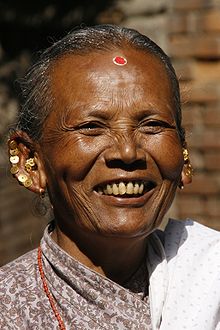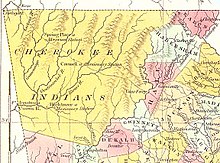This is just a load of big D so taste me.
No
Feel my breasts
Feel my wet nurse
A
wet nurse is a woman who
breast feeds and cares for another's child.
[1] Wet nurses are employed when the mother is unable or chooses not to nurse the child herself. Wet-nursed children may be known as "milk-siblings", and in some cultures the families are linked by a special relationship of
milk kinship. Mothers who nurse each other's babies are engaging in a reciprocal act known as
cross-nursing or
co-nursing.
Reasons[edit]
A wet nurse can help when a baby's natural
mother is unable or chooses not to feed the infant. Before the development of baby formulas in the 20th century, when a mother was unable to breastfeed her baby, the baby's life was put in danger if a wet nurse was not available. There are many reasons why a mother is unable to
lactate or to produce sufficient breast milk. Reasons include the serious or chronic illness of the mother and her treatment which creates a temporary difficulty to nursing. Additionally, a mother's taking drugs (prescription or recreational) may necessitate a wet nurse if a drug in any way changes the content of the mother's milk. Some women choose not to breastfeed for social reasons.
Wet nurses have also been used when a mother cannot produce sufficient breast milk, i.e., the mother feels incapable of adequately nursing her child, especially following
multiple births. Wet nurses tend to be more common in places where the
maternal mortality is high.
[2]
Eliciting milk[edit]
A woman can only act as a wet-nurse if she is
lactating. It was once believed that a wet-nurse must have recently undergone childbirth. This is not necessarily true, as regular breast suckling can elicit lactation via a
neural reflex of
prolactin production and secretion.
[3] Some adoptive mothers have been able to establish lactation using a
breast pump so that they could feed an adopted infant.
[4]
Dr Gabrielle Palmer
[5] states:
There is no medical reason why women should not lactate indefinitely or feed more than one child simultaneously (known as 'tandem feeding')... some women could theoretically be able to feed up to five babies.[6]
Practice across cultures[edit]
The practice of using wet nurses is ancient and common to many cultures. It has been linked to
social class, where
monarchies, the
aristocracy,
nobility or
upper classes had their children wet-nursed in the hope of becoming pregnant again quickly. Lactation inhibits
ovulation in some women, thus the practice has a rational basis. Poor women, especially those who suffered the
stigma of giving birth to an
illegitimate child, sometimes had to give their baby up, temporarily or permanently, to a wet-nurse.
Ancient history[edit]
Many cultures feature stories, historical or mythological, involving superhuman, supernatural, human and in some instances animal wet-nurses.
The Bible refers to Deborah, a nurse to Rebekah wife of Isaac and mother of Israel, who appears to have lived as a member of the household all her days. (Genesis 35:8) The
Torah holds that the
Egyptian princess
Batya (whose place is occupied by
Egyptian queen
Asiya in Islamic legends) attempted to wet-nurse
Moses, but he would only take his biological mother's milk. (
Exodus 2:6-9)
In
ancient Rome,
well-to-do households would have had wet-nurses (
Latin nutrices, singular
nutrix) among their
slaves and freedwomen,
[7] but some
women were wet-nurses by profession, and the
Digest of
Roman law even refers to a wage dispute for wet-nursing services
(nutricia).
[8] The landmark known as the
Columna Lactaria ("Milk Column") may have been a place where wet-nurses could be hired.
[9] It was considered admirable for
upperclass women to
breastfeed their own children, but unusual and old-fashioned in the
Imperial era.
[10] Even women of the working classes or slaves might have their babies nursed,
[11] and the Roman-era Greek gynecologist
Soranus offers detailed advice on how to choose a wet-nurse.
[12] Inscriptions such as
religious dedications and
epitaphs indicate that a
nutrix would be proud of her profession.
[13] One even records a
nutritor lactaneus, a male "milk nurse" who presumably used a bottle.
[14] Greek nurses were preferred,
[15] and the Romans believed that a baby who had a Greek
nutrix could
imbibe the language and grow up speaking
Greek as fluently as Latin.
[16] The importance of the wet nurse to
ancient Roman culture is indicated by the
founding myth of
Romulus and Remus, who were
abandoned as infants but nursed by the she-wolf, as portrayed in the famous
Capitoline Wolf bronze sculpture. The goddess
Rumina was
invoked among other
birth and child development deities to promote the flow of breast milk.
Islamic culture[edit]
The Islamic prophet
Muhammad was wet-nursed by
Halimah bint Abi Dhuayb. Islamic law or
sharia specifies a permanent family-like relationship (known as
rada) between children nursed by the same woman, i.e., who grew up together as youngsters. They and various specific relatives may not marry, that is, they are deemed
mahram.
Renaissance to 20th century[edit]
Wet nursing was reported in
France in the time of
Louis XIV, the early 17th century. It was commonplace in the
British Isles:
For years it was a really good job for a woman. In 17th- and 18th-century Britain a woman would earn more money as a wet nurse than her husband could as a laborer. And if you were a royal wet nurse you would be honored for life.[6]
Women took in babies for money in
Victorian Britain, and nursed them themselves or fed them with whatever was cheapest. This was known as
baby-farming; poor care sometimes resulted in high
infant death rates. Dr Naomi Baumslag
[17] noted legendary wet-nurse
Judith Waterford: "In 1831, on her 81st birthday, she could still produce breast milk. In her prime she unfailingly produced two quarts (four pints or 2.3 litres) of breast milk a day."
[6]
The English wet-nurse in Victorian England was most likely a single woman who previously gave birth to an illegitimate child, and was looking for work in a profession that glorified the single mother.
[18] English women tended to work within the home of her employer to take care of her charge, as well as working at hospitals that took in abandoned children. The wet-nurse’s own child would likely be sent out to nurse, normally brought up by the bottle, rather than being breastfed. Fildes argues that “In effect, wealthy parents frequently ‘bought’ the life of their infant for the life of another.”
[19]
Wet-nursing in England decreased in popularity during the mid-19th century due to the writings of medical journalists concerning the undocumented dangers of wet-nursing. Valerie A. Fildes argued that “Britain has been lumped together with the rest of Europe in any discussion of the qualities, terms of employment and conditions of the wet nurse, and particularly the abuses of which she was supposedly guilty.”
[20] According to C.H.F. Routh, a medical journalist writing in the late 1850s in England, argued many evils of wet-nursing, such as wet-nurses were more likely to abandon their own children, there was increased mortality for children under the charge of a wet-nurse, and an increased physical and moral risk to a nursed child.
[21]While this argument was not founded in any sort of proof, the emotional arguments of medical researchers, coupled with the protests of critics of the practice slowly increased public knowledge and brought wet-nursing into obscurity, replaced by maternal breastfeeding and bottle-feeding.
[22]
Wet nurses were common for children of all social ranks in the southern
United States during the 19th and early 20th centuries. Wet nursing has sometimes been used with old or sick people who have trouble taking other nutrition. Following the widespread marketing and availability of artificial baby milk, or
infant formula, wet nursing went into decline after
World War II and fell out of style in the affluence of the mid-1950s. Wet nurses are no longer considered necessary in
developed nations and, therefore, are no longer common.
Current attitudes in developed countries[edit]
In contemporary affluent Western societies particularly affected by the successful marketing of infant formula, the act of nursing a baby other than one's own often provokes cultural squeamishness, notably in the
United States and
United Kingdom[citation needed]. When a mother is unable to nurse her own infant, an acceptable mediated substitute is screened, pasteurized,
expressed milk (or especially
colostrum) donated to
milk banks, analogous to
blood banks, a sort of bureaucratic wet-nurse. Dr Rhonda Shaw notes that Western objections to wet-nurses are cultural:


















